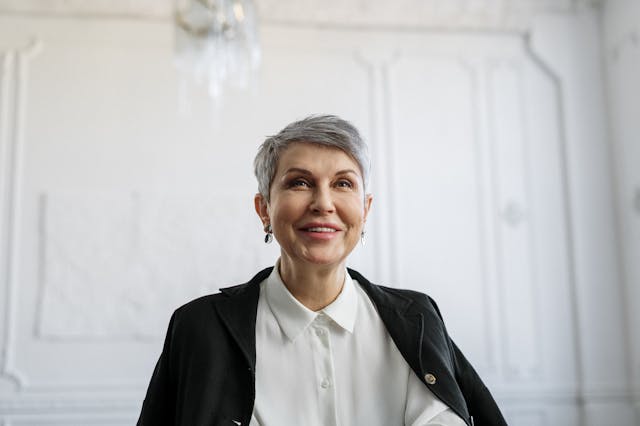Empower Yourself
Gain knowledge and tools to take control of your health and wellness journey.
Expert Insights
Access informative and reliable content from health professionals on various topics.
Comprehensive Coverage
Find everything from disease information to wellness strategies for seniors in one convenient online resource.


Empowering Individuals
Knowledge and Tools
At Alchimag, our mission is to empower individuals with knowledge and tools for a healthier lifestyle. We believe that with the right information and guidance, everyone can make informed decisions for a happier and healthier life.
A Wide Range of Categories to Explore
Empower yourself with knowledge about diverse health-related topics and discover expert insights.
Our Services:
Stay informed with the latest health news and updates from around the world.
We provide tools and resources for every life stage, from pregnancy through seniors.
Experienced Professionals Dedicated to Your Health
Our team offers expert advice and support to help you achieve a healthier lifestyle.
From disease management to wellness strategies, we have you covered.
Expert Insights and the Latest Information on Health-Related Topics
Stay informed and up-to-date with Alchimag’s comprehensive resources.

From Disease Prevention to Wellness Strategies
Our expert insights cover a wide range of health-related topics.

Customized Plans for Seniors Seeking Health & Wellness
We offer tailored advice and strategies for seniors to maintain optimal health.

Preparing for Motherhood:
Empower yourself with information and tools for a healthy and happy pregnancy.
Infographic Numbers for a Better Understanding of Health and Wellness
Get a clearer picture of the health and wellness industry with our informative infographics.
Stay Informed with Alchimag
Our goal is to empower individuals with the latest and most reliable information about health and wellness. With Alchimag, you’ll have access to expert insights, news, and tips for a healthier lifestyle.
Join Our Community and Take Control of Your Health Journey Now
Empower yourself with the latest health and wellness insights.

Recent Blog Posts
Stay up to date with the latest health news and expert insights on Alchimag.
How Can the NHS Improve Patient Care in the Future?
Addressing Key Challenges Facing NHS Patient Care Understanding the[…]
How is personalized medicine transforming healthcare in the UK?
Personalized Medicine and Its Transformative Role in the UK[…]
How Can You Effectively Boost Your Well-being Through the UK Healthcare System?
Accessing NHS Preventive Services for Optimum Well-being Access to[…]
How Does the UK Ensure the Safety of Its Healthcare Products?
Key Regulatory Authorities in UK Healthcare Product Safety The[…]
How Can Individuals Mitigate the Impact of Common Health Diseases in the UK?
Overview of Common Health Diseases in the UK Understanding[…]
How Can UK Health Professionals Enhance Their Career Through Learning and Development Programs?
Pathways for UK Health Professionals to Advance Careers Through[…]
How Can the UK’s Health Reforms Impact Patient Experience?
Immediate Effects of UK Health Reforms on Patient Services[…]
How Does the UK Healthcare System Prioritize Public Well-being?
Structure and Principles of the UK Healthcare System The[…]
How is the UK enhancing mental health support for young people?
Latest Government and NHS Initiatives Improving Youth Mental Health[…]
What Are the Latest UK Health Trends You Should Be Aware Of?
Key UK Health and Wellness Trends for 2024 The[…]
How Are UK Health Professionals Embracing Technological Innovations?
Adopting Digital Solutions in UK Healthcare Digital health innovations[…]
How Can UK Health Professionals Innovate to Meet Future Challenges?
Practical Strategies for Innovation in UK Healthcare Innovation among[…]
What are the advantages of joining a wellness retreat in the UK?
Discover the Tranquility and Benefits of Joining a Wellness[…]
How can UK seniors stay safe while using public transport?
Practical Safety Tips for UK Seniors Using Public Transport[…]
What Measures Can Expectant Mothers Take to Ensure Healthy Sleep Habits?
Ensuring Healthy Sleep Habits During Pregnancy: A Comprehensive Guide[…]
Unlocking the secret: how meal timing influences your weight and metabolic health
Unlocking the Secret: How Meal Timing Influences Your Weight[…]
What role does physical activity play in UK public health?
The Vital Role of Physical Activity in UK Public[…]
How can seniors in the UK access affordable fitness programs?
Overview of Affordable Fitness Programs for UK Seniors Affordable[…]
What are the guidelines for prenatal check-ups in the UK?
Guidelines for Prenatal Check-Ups in the UK: A Comprehensive[…]
Top meal planning strategies to prevent last-minute unhealthy food choices
Mastering Meal Planning: Strategies to Prevent Last-Minute Unhealthy Food[…]
How Can You Improve Your Daily Routine for Better Health in the UK?
Optimizing Your Daily Diet for Enhanced Health in the[…]
